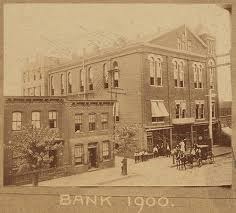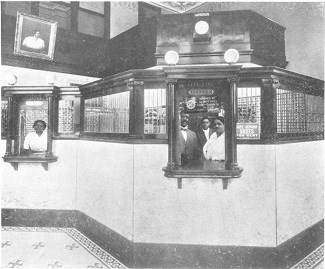Last updated: June 22, 2021
Article
Jackson Ward and its Black Wall Street

Jackson Ward after the Civil War
In post-Civil War Richmond, the Jackson Ward area was the northern most section of the city and was home to a diverse set of Richmonders. When the Civil War ended the neighborhood was largely made up of European immigrants and both free and formerly-enslaved Black citizens. Throughout the late 1800s the demographics of Jackson Ward shifted to be up to 90% Black residents. During the 1870s, the all-white Richmond City Council stifled the political power of Black residents by gerrymandering them into one voting ward, which they called Jackson Ward. Most Black residents now voting for just one city council seat, and white Richmonders seized control of the other five, guaranteeing a majority on the city council.
Black Richmonders found their local political influence stolen by the Richmond City Council, but the residents of Jackson Ward still exercised their rights in state elections to strong effect. White Virginians wanted to strip more rights from Black Virgininians and a new constitutional convention convened to codify Jim Crow segregation as statewide law . The convention drafted a new constitution in 1902 without the input of a single Black resident. Carter Glass, a newspaper editor and politician from Lynchburg, Virginia stated the purpose of the convention was "the elimination of every Negro who can be gotten rid of, legally, without materially impairing the strength of the white electorate." The new constitution instituted poll taxes, grandfather clauses, literacy tests and more restriction, disenfranchising 90% of African American voters in Virginia. With the voting power of the neighborhood diminished the city council saw no need for a majority Black voting ward and dismantled Jackson Ward as its own voting ward. Even with its political power limited through Jim Crow segregation, Jackson Ward grew into a bastion of Black business and entrepreneurship.
Second Street Becomes the Centerpiece of Jackson Ward

NPS Photo/Maggie L. Walker NHS
Second Street became the hub of business activity for Jackson Ward with many other businesses developed during this period. By the 1900s several fraternal organizations had already developed the insurance industry in Jackson Ward, but independent companies, such as The Southern Aid and Insurance Company, also operated in Jackson Ward. Insurance comanies, banks, theaters and many other types of businesses were located on Second Street in Jackson Ward, creating a hub of Black-business found in very few communities in the early 1900s. Second Street became known as Black Wall Street by 1903, one of the earliest references of a street being called "Black Wall Street."
